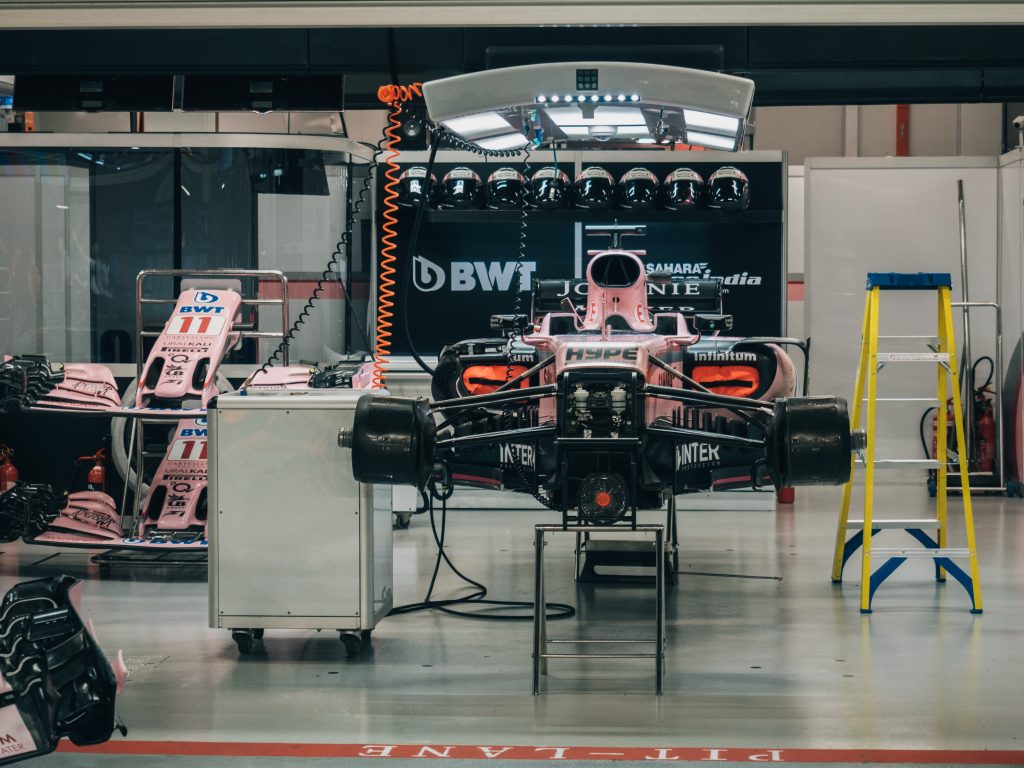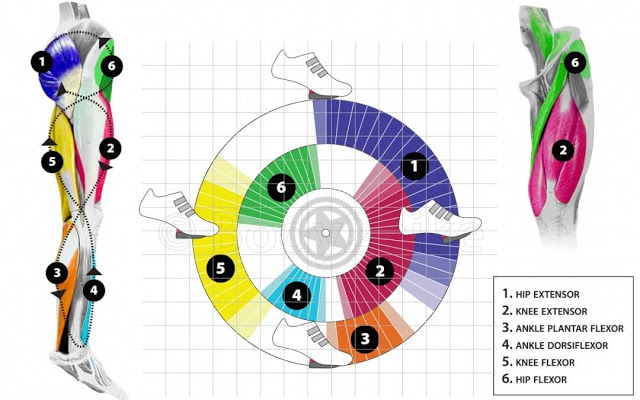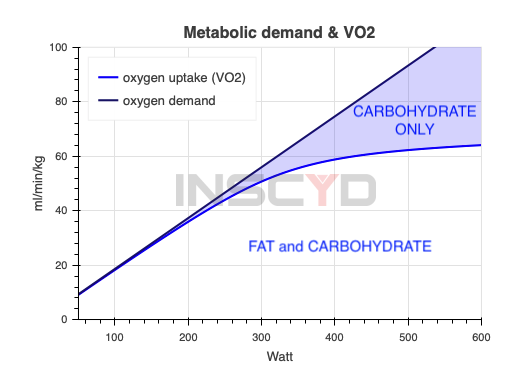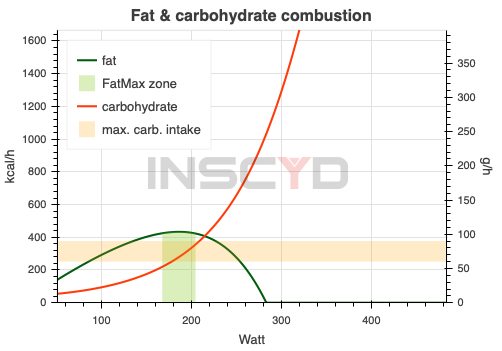In my opinion the general understanding of fuelling and the basic principles of how our bodies utilise those fuels is poor and too much emphasis is placed on training outputs. Understand what you put in your body, how you utilise what you put in it and you will see all your training outputs improve. And more importantly you’ll get better racing results. What’s the point in focusing/doing/obessing over training sessions, long rides, new fancy equipment etc if you don’t get fuelling right.
The following is a simplification of the current theory but the basic principles can be used to greatly improve your performance. If you are interested in exploring the details Ive added some great source material at the end.
A formula 1 car is the fastest most technologically advanced car on the planet. It can almost defy physics, create so much G force in a corner that drivers have to constantly work on their neck strength to keep their heads upright while driving. But if you don’t put any petrol in them, or you put the wrong petrol or not enough petrol, they are just pieces of carbon fibre. We are the same.

If you don’t fuel correctly you wont perform. And you think formula one cars are petrol hungry, well athletes take it to a new level!
Before we get into sports performance, we need to outline how our body fuels just to perform normal human functions. Like an F1 car idling in the garage to cruising down the pit lane.
Base Metabolic Rate – BMR or Resting Metabolic Rate – RMR
This an individuals minimum required energy expenditure at rest, or the minimum amount of energy required to carry out base physiological functions eg breathing. Muscle has a higher metabolic activity than fat, so the leaner you are, or the more fat-free mass you have the higher your BMR will be. It is given in kcals/day.
An easy calculation is the Katch-McArdle Formula.
BMR = 370 + (21.6 * Lean Body Mass[kg])
Now with a power meter its very easy to calculate the additional energy requirement for riding. 1w per hour = 3.6kjs. So a classic steady endurance ride of 200w for 3 hours = (200*3)*3.6 = 2160kjs. Luckily cycling is a very efficient activity and hardly any energy is wasted unlike running so 1kjs = 1kcal. Therefore after the 3 hour ride at 200w you need to add 2160kcal to your daily energy requirement.
With this we can work out how much total fuel we need for a given day but which fuel do we choose?!
That depends on what we are doing. To continue with the metaphor.. Are we running our qualifying lap in which case we need the fuel that will combust the fastest for top speeds but will only last a couple of laps (Carbohydrate). OR do we want the more economical fuel which is a bit slower but gives a larger proportion of energy for the same amount of fuel (Fat)?
First a quick take on how we use energy in cycling.
All energy originates from the sun as light energy, plants turn this into chemical energy through photosynthesis. We get that stored chemical energy by eating the plants or the animals that eat the plants. We store this chemical energy as fat, carbohydrate or protein.
Ingested carbohydrate is broken down in the gut and secreted into the blood as glucose and is transported to the liver and muscles for use or it is stored as glycogen. A well trained male can store up ~20g/kg of muscle glycogen plus a further 100-150g in the liver. For cycling we are only interested in the legs, glycogen stored in muscles can not be transported to other muscles unlike liver glycogen.
Fat is stored in much higher quantities even the leanest of athletes will have ~70000kcal or more. While fat breakdown produces a much higher energy yield (9.4kcal/g) than carbohydrate (4.1kcal/g) it is much slower to release that energy. A big ride might be 4-5000kjs so you will only put a small dent into your total fat stores!
Our muscle cells then breaks down this stored chemical energy to release the kinetic energy, this is your Metabolism. A F1 car engine does fundamentally the same thing. Turns the stored chemical energy of petrol into heat and motion. Our muscles contract and relax over the course of the pedal stroke. Speed of contraction, force of contraction, endurance or resistance to fatigue dictate your power output.

There are three main fibre types (they can be further categorised but for simplicity we’ll stick with 3). Type 1 – SLOW TWITCH. Slow being slow to fatigue rather than slow to contract. Most efficient at oxidising fat and carbohydrate. Type 2a – FAST TWITCH. Can generate more force than type 1 but fatigue faster. Can oxidise carbohydrate but also produce energy anaerobically. Type 2x – Only produce energy anaerobically.
During a race you need a lot of muscle fibre contractions for example during a 3 hour race averaging 90RPM you make 16200 pedal revolutions. So fatigue resistance is top of the requirement list but you also need to make a smaller number of high force contractions when pushing out the big watts.
The energy token the muscles uses for contraction is called ATP.
Adenosine triphosphate (ATP) is considered by biologists to be the energy currency of life. It is the high-energy molecule that stores the energy we need to do just about everything we do. It is present in the cytoplasm and nucleoplasm of every cell, and essentially all the physiological mechanisms that require energy for operation obtain it directly from the stored ATP.
Now let’s look at the two primary pathways the muscle uses to turn the stored energy (Fat/Carb) into the muscle’s energy token ATP.
Anaerobic Glycolysis means oxygen is not used, only glycogen (stored carbohydrate) or glucose (carbohydrate as a simple sugar ready for energy metabolism and transported in the blood) can be used to create ATP without oxygen. However it only produces a small amount of energy, 2 (glycogen) or 3 (glucose) ATP depending on the start product. This system is very fast due to lack of oxygen needed, however fatigue sets in extremely quickly as the energy demand soon outweighs the energy production unless aerobic metabolism can pick up the demand. The by product of either anaerobic or aerobic glycolysis is pyruvic acid. Without oxygen present the pyruvic acid is turned into lactate acid and during prolonged high intensity efforts the muscle can become so acidic further glycolysis can no longer occur due to the high lactic values.
Aerobic energy production means Oxygen is used. Fat and Carbohydrate (stored as Glycogen) is oxidised to create energy. What is important to know is slower to turn on probably as a consequence of the demand it places on the cardiovascular system (why your HR and breathing increases with a slight delay, the muscles require more oxygen) but creates a big energy yield.
Aerobic Glycolysis can yield 37 to 39 molecules of ATP from one molecule of glycogen. In the presence of oxygen the pyruvic acid is converted into further energy (ATP) through a number of complex reactions.
Fat metabolism can yield up to 129 molecules of ATP but is a much more complex reaction and requires more oxygen than aerobic glycolysis (possibly why as intensity increases fat metabolism contributes less).
Intensity of effort dictates the relationship between these two energy systems. It is not a case of one or the other. The more intense the effort the faster the rate of energy needed so the higher the contribution from anaerobic glycolysis.
With INSCYD we can model your individual anaerobic/aerobic energy contribution at a given intensity. This is based off your VO2max (max aerobic energy production) and VLamax (max anaerobic energy production).

The bigger the blue shaded area the bigger the anaerobic contribution. As anaerobic glycolysis can only use carbohydrate as a fuel source, the bigger the blue shaded area the more carbohydrate will be burnt.
As a general rule, once your carbohydrate burn has reached 65-70% of your total glycogen storage your body will start to preserve what’s left for vital organs (mainly the brain). Blood glucose drops and hypoglycaemia occurs. The lack of available glycogen for the muscles means a reduction in energy for muscle contraction as the energy requirement is filled more by fat. Power will drop, perceived level of effort will go up and in the case of hypoglycaemia, normal brain function is impaired. The dreaded bonk. Therefore it is better to have a higher fat combustion during sub threshold efforts as you can spare glycogen from the bigger energy yield of fat.
INSCYD also models your individual carb/fat combustion so we can work out how big your carbohydrate fuel tank is and crucially, the rate at which you burn through it. In the chart below you can see how carbohydrate is the primary source of fuel from a relatively low intensity, and becomes the only source of fuel once threshold is reached. This is due to the increasing oxygen demands and levels of lactate in the blood rising, effectively ‘pushing out’ the conditions for fat oxidation (remember fat takes more oxygen to turn into energy).

From this we can develop accurate training loads and weekly fuelling/nutrition strategies so we know you have the available energy to complete each session well. Rather than planning a training week using TSS/TSB we use carbohydrate availability and total kjs. We can create accurate race day fuelling strategies to take you to your metabolic limit. We know that if you eat and drink 90g/h you can sustain Xw and time above threshold.
Next time we will explore more detail on fuelling pre, during and after exercise.
In short
- Stored energy (fat, carb, protein) is turned into kinetic energy (ATP) in the muscle cells so your muscles contract to push the pedals.
- The energy pathway (aerobic or anaerobic) determines the speed and energy yield of this process.
- Aerobic metabolism is most important for cycling on the whole, but the anaerobic (glycolytic) metabolism will impact your peak power outputs.
- Fat metabolism is important and will be a key factor in fatigue resistance.
- But it’s carbohydrates/glycogen which rule in racing and training. Without adequate glycogen availability you will struggle to get the results you deserve.
- Using INSCYD results we can work out your fuel tank, your fuel burn rate so you always know you have enough fuel to train and race at the required intensity day after day.
As I mentioned at the beginning, this is an oversimplification of the theory however the principles are sound in our cycling/endurance specific scenario. If you do want to read up on the third major energy system (ATP-PCr), go into the details of the aerobic metabolism (Krebs cycle, Electron transport chain), or learn about how hormones regulate our metabolic response to exercise then I can recommend the following books. They are excellent sources.
Physiology of Sport and Exercise – Wilmore, Costill, Kenney
Sport Nutrition – Asker Jeukendrup

